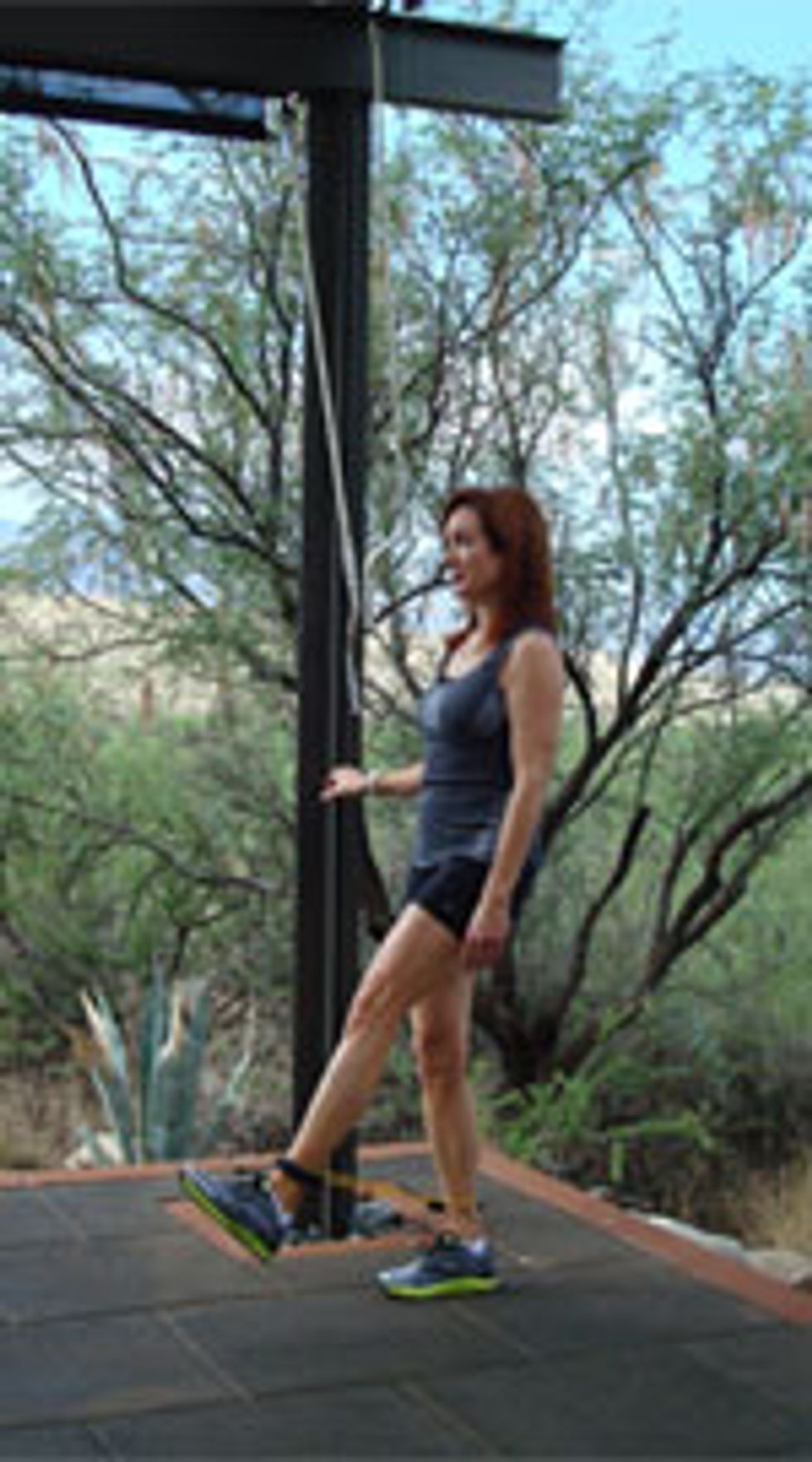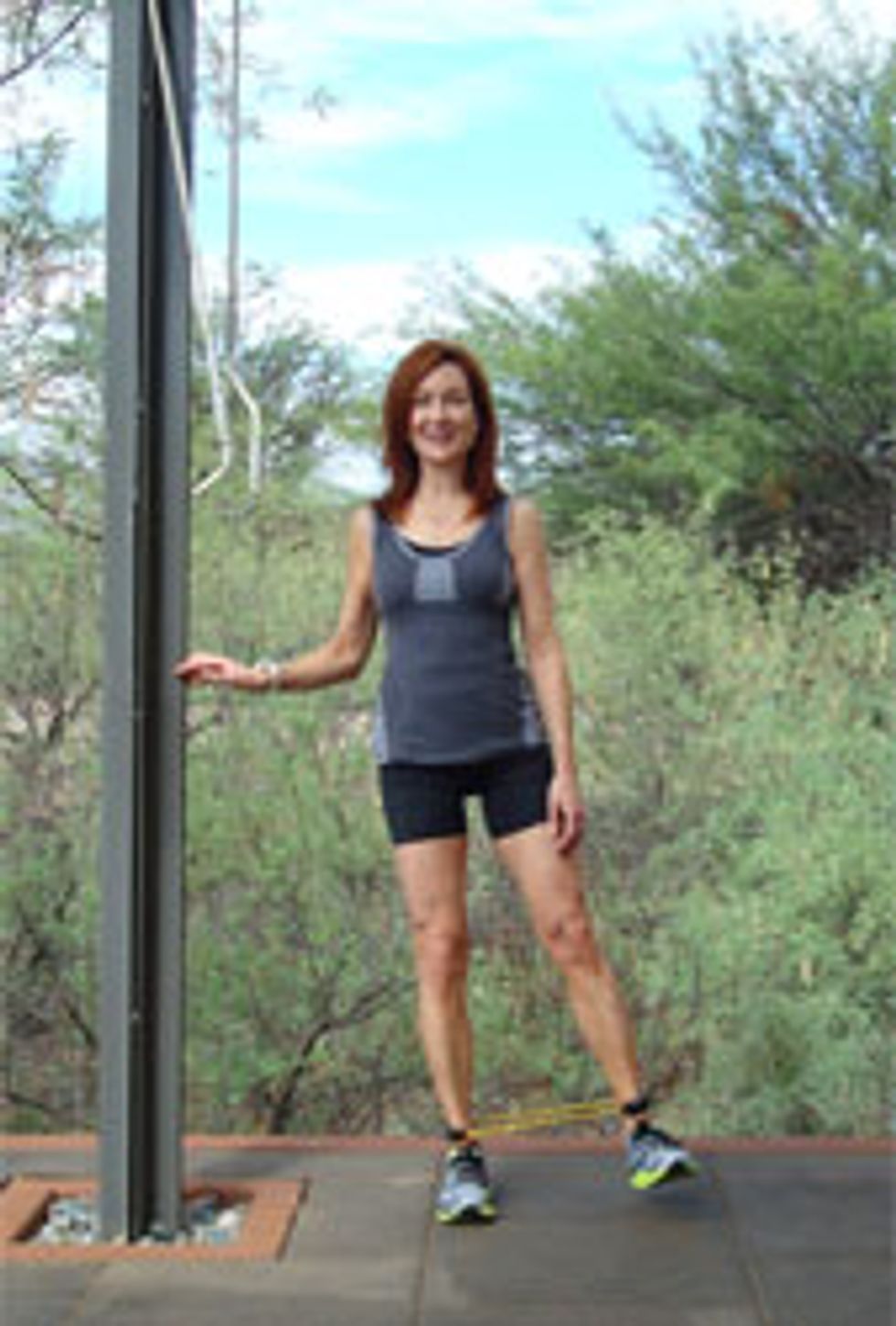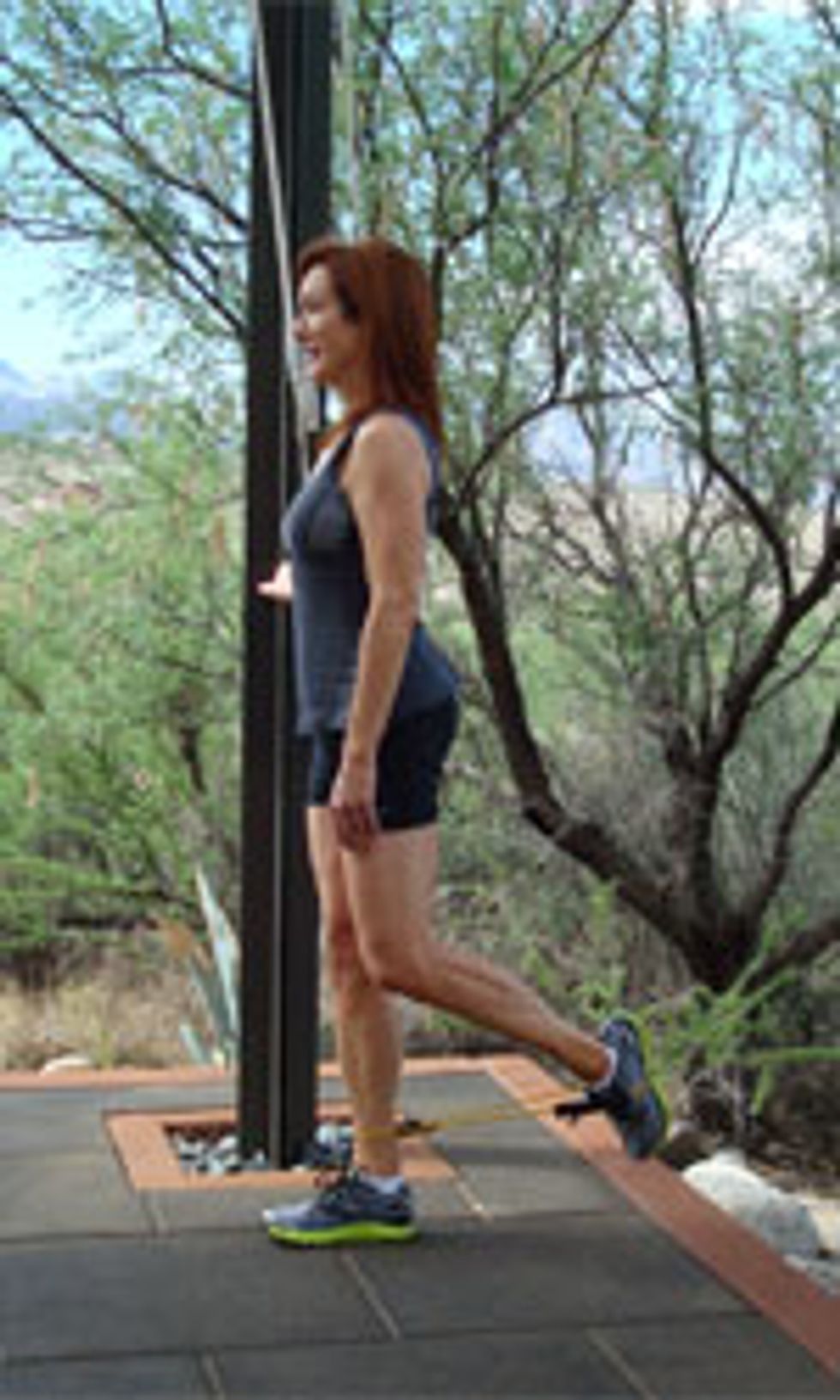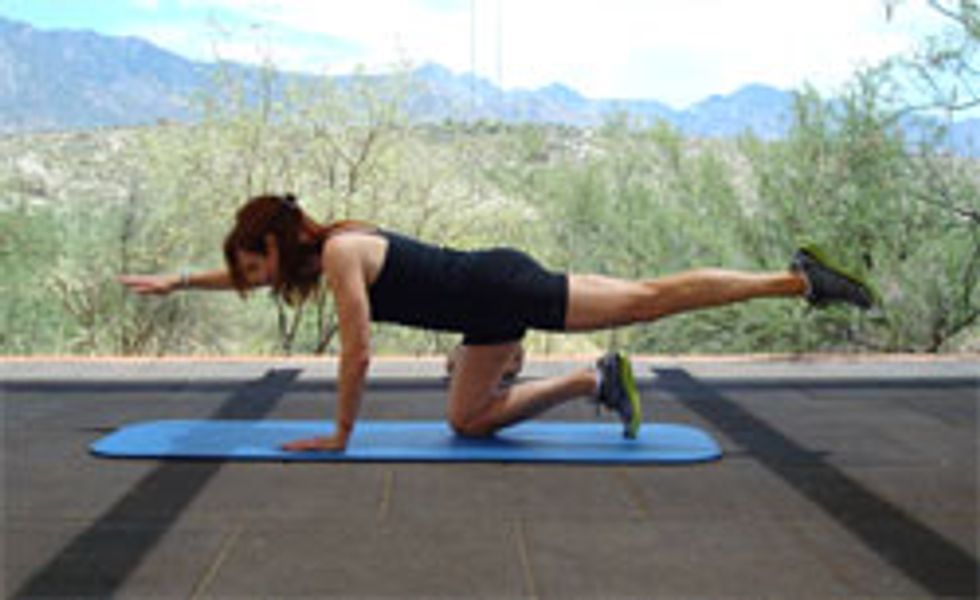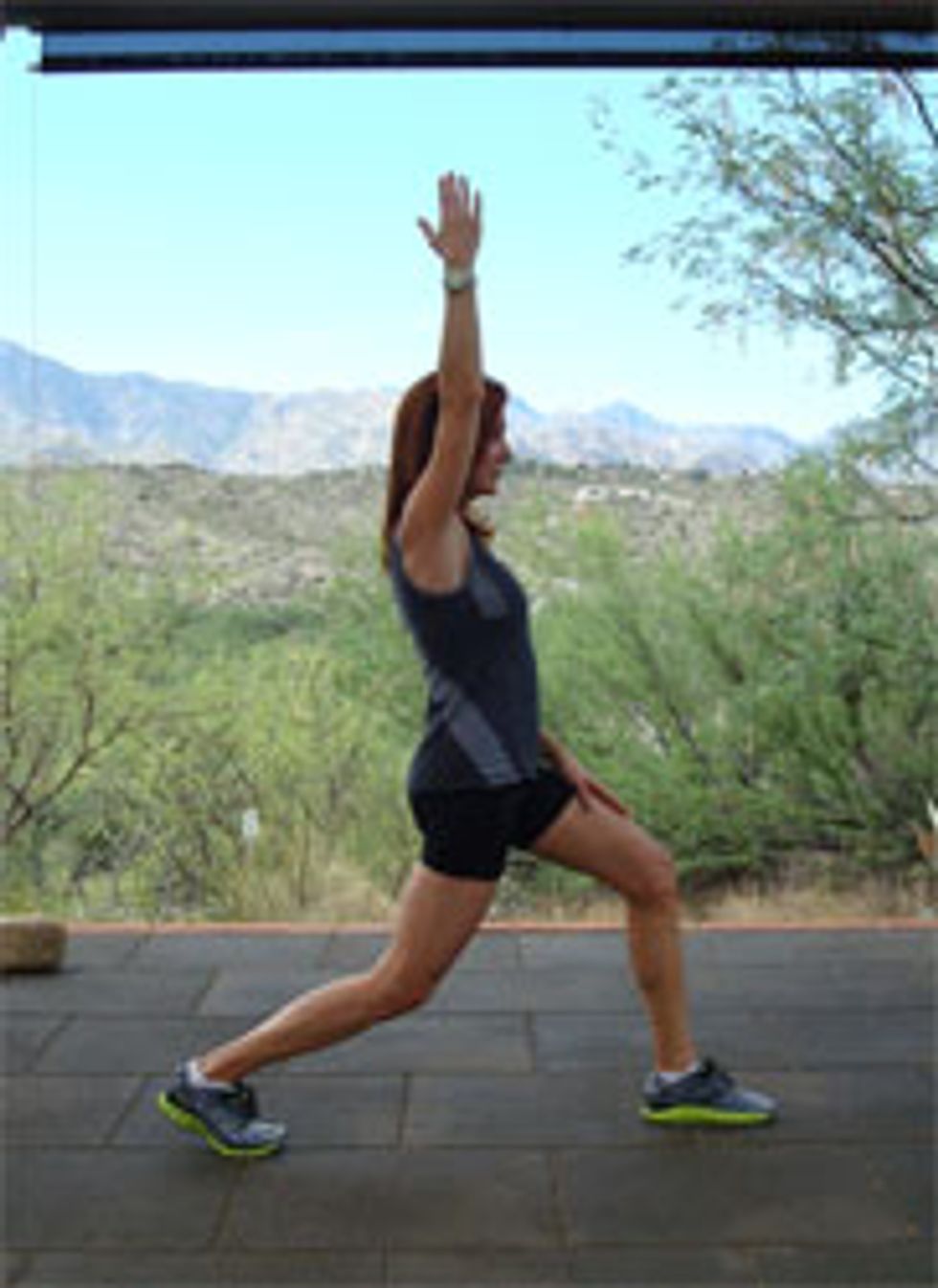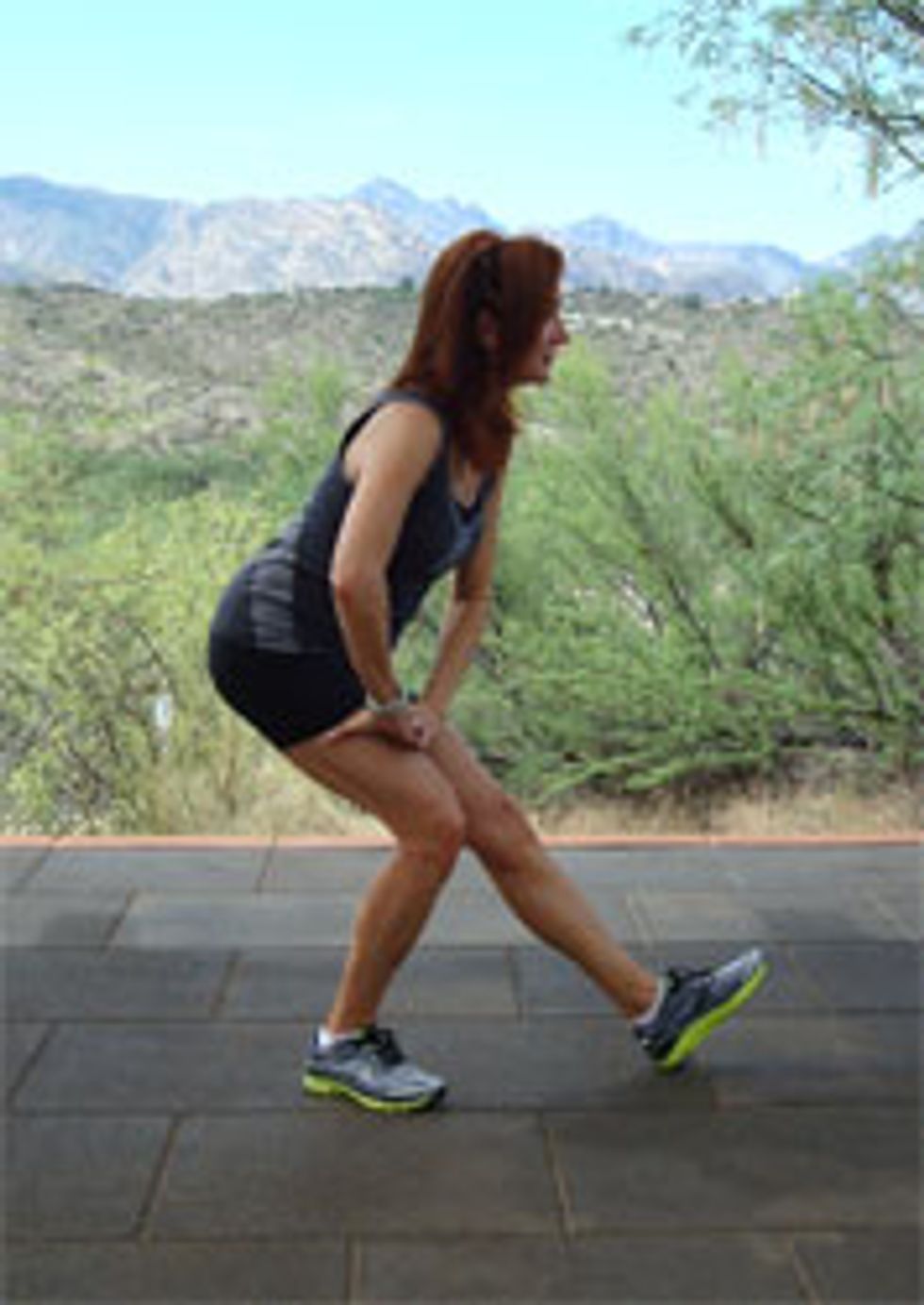Apologies. I'm terribly late with my promise of the last installment of the excellent no-gym-required workout I brought home from my recent visit to Miraval Spa in Tucson, Arizona. But between then and now, I've been holed up in a hotel room thanks to Hurricane Irene. Some of my files were left behind at home, and I was finally able to grab them today. We'll be moving back to our house sometime later this week. Yes!
I've missed having my own space, my own things, my own familiar surroundings. And if these past two weeks have taught me anything, it's that I am definitely not the wandering type. I used to fantasize about selling the house, buying one of those killer RVs and making my way through every corner of the country. There are too many states—Montana and Tennessee among them—that I haven't seen. Scrap that idea. The pull and security of my own home is a whispering force that caught me a bit off guard.
So, tell me. Have you been enjoying the upper-body exercises? And waiting impatiently for the rest of your routine? Is your body strong(er) and more buff?
If the answers are no to any or all of the above, here's my nag: Get on it! It's a fact that prolonged periods of inactivity are a major contributor to reduced bone mass. Why concentrate on the upper and lower part of the body? Well, bone loss in your hips, a common place for that loss to occur, can be slowed by strength training that is geared at progressively increasing lower body strength. A July 2011 release I read in the Health Behavior News Service quotes Tracey Howe, a professor of rehabilitation services at the Glasgow Caledonian University in Scotland: "The concept of bone loss is a confusing one for most people. Bone loss is an inevitable part of aging and our review indicates that exercise appears to slow it down. But exercise needs to be done on a regular basis, as stopping exercise means bone loss will continue at the same rate as before."
Feeling guilty? Or motivated? Hopefully, the latter. Here we go!
1. Straight Front Leg Raise (with resistance loop)
Muscles worked: Quadriceps (front of thigh)
Why you need these muscles: For walking, running, climbing stairs and rising from a seated position
Tips: Stand upright and avoid arching your back. As you gain more strength in your quadriceps, you can increase the time you hold the leg up and/or add an ankle weight to the leg being raised.
How to: Stand upright with feet together. With right hand loosely holding onto a nearby stationary object like a pole or chair for balance, slowly raise left leg a few inches off the ground, keeping knee straight. Your supporting leg should be straight but not locked. Hold raised leg in front of you for 3-4 seconds, then lower back to starting position. Repeat 8-12 times, then repeat the entire exercise on the opposite side. 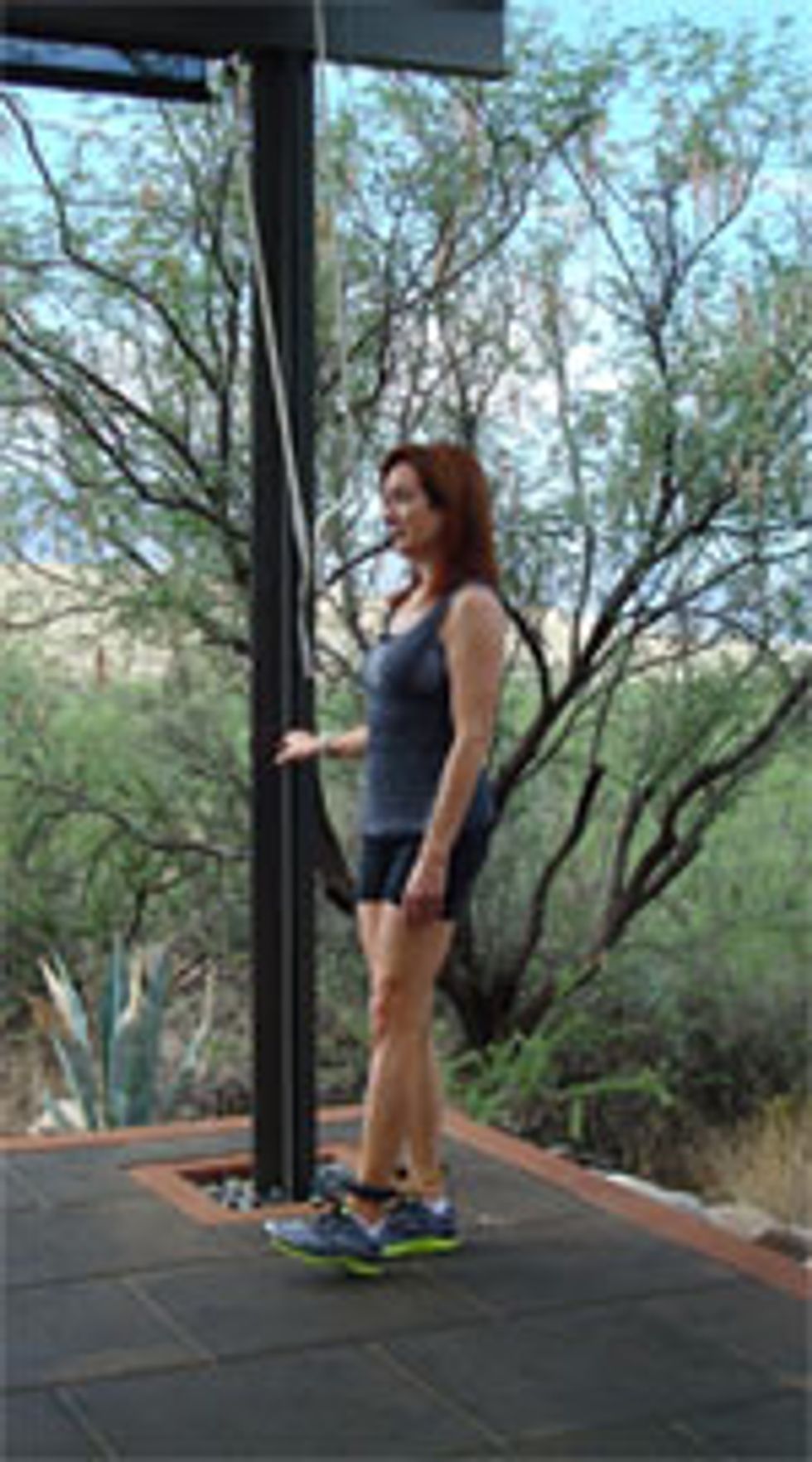
2. Hip Abduction (with resistance loop)
Muscles worked: Hip abductor muscles (on the outside of the hips)
Why you need these muscles: To stabilize your pelvis when walking or running
Tips: Stand straight, feet shoulder-width apart, keeping your pelvis level (avoid leaning to the side, forward or backward while performing the exercise). To get full range of motion, keep knee on the working side slightly soft.
How to: Loop the tubing around your ankles. Tighten your abdominal muscles while slowly moving your entire leg out to the side. Be careful to maintain balance and alignment with your opposite leg. Hold for 3-4 seconds, then return to starting position. Repeat for 8-12 repetitions, then switch sides. 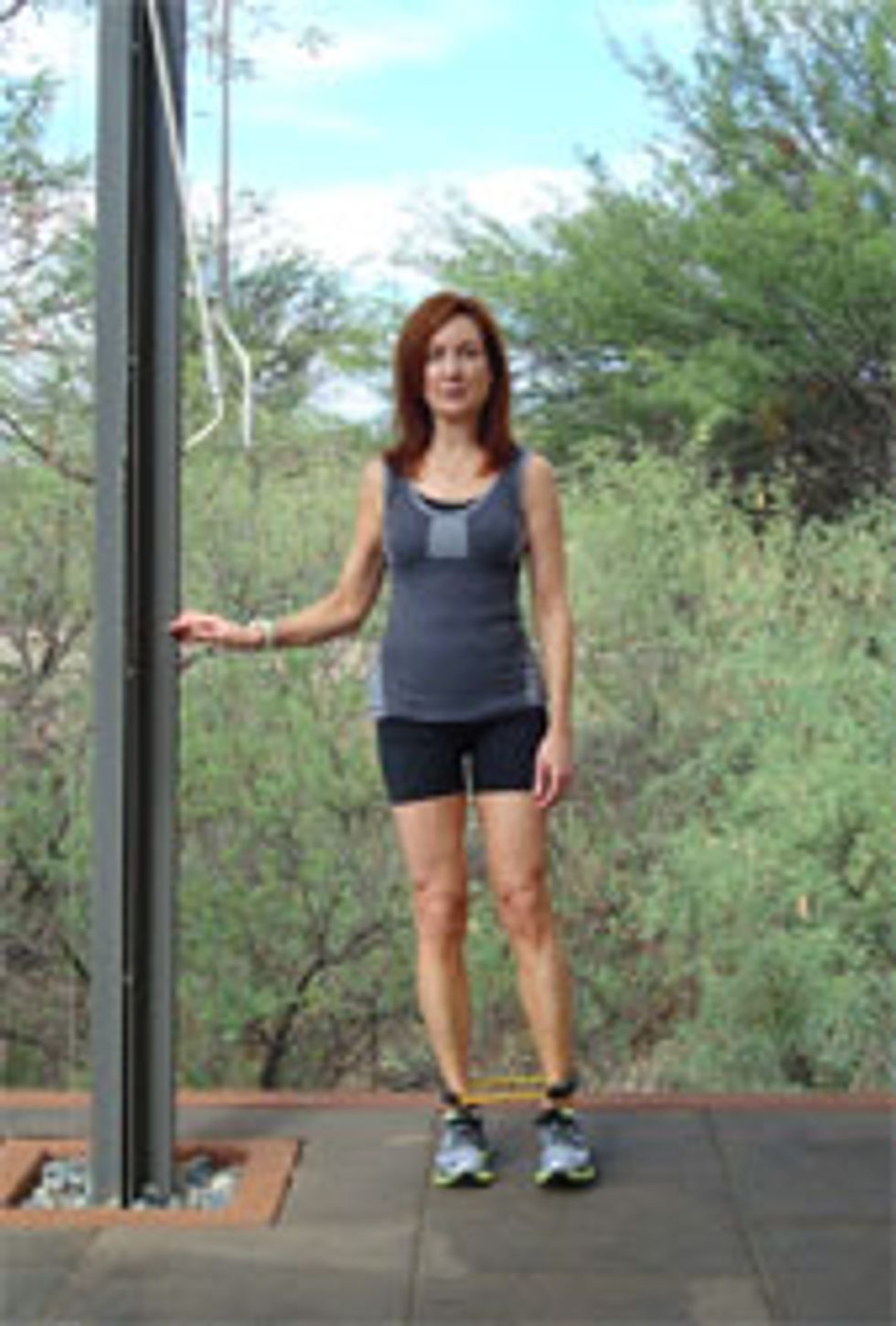
3. Hip Extension (with resistance loop)
Muscles worked: Gluteus maximus (the largest muscle making up the shape of the buttocks)
Why you need this muscle: For climbing stairs, running and supporting your lower back. (And of course, if you want to look like JLo).
Tips: Make sure feet are hip-width apart, abs are engaged and your support leg is slightly bent.
How to: Stand by a counter, pole or chair for support. Keep abs tight. Bend leg and bring foot about 3-4 inches off the floor, then push the foot slightly back, holding for 3-4 counts. Foot should be flexed. Hold, then slowly lower, repeating 8-12 times per leg. This can also be performed keeping working leg nearly straight.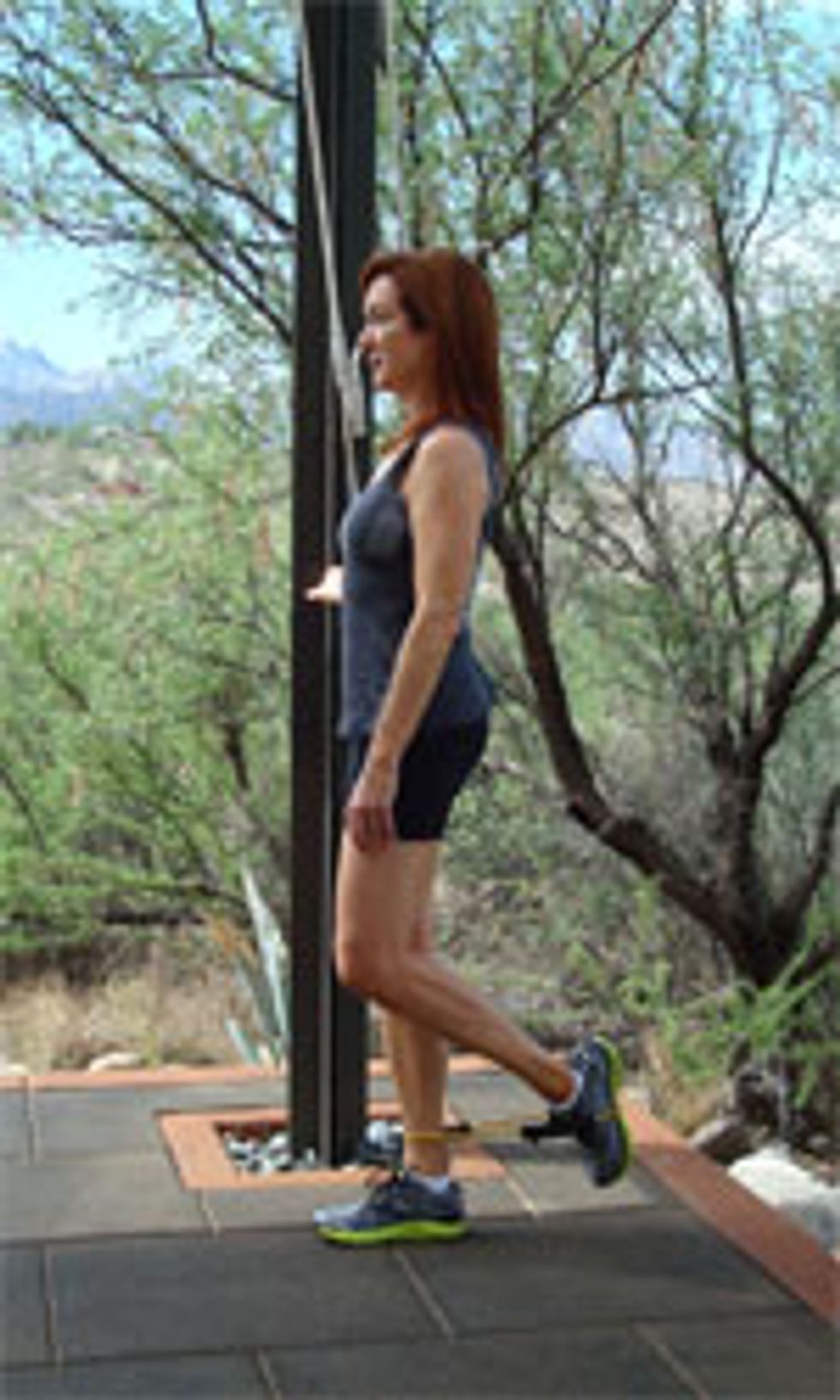
4. Spine Extension
Muscles worked: Lower back muscles
Why you need these muscle: For lifting and holding the spine and head upright
Tips: Imagine that your head and tail are moving as far away from each other as possible. Make sure to keep trunk rigid (not arched) while tightening abs.
How to: Get down on all fours, arms straight, hands under your shoulders with abs lifted, shoulders relaxed and squared. Extend right arm while extending left leg, pointing foot toward opposite wall. Stretch as much as you comfortably can in opposite directions. Hold for 3-4 counts, then switch sides.
5. Hip Flexor Stretch
Muscles worked: Hip flexors
Why you need these muscles: So you can bend your knees and bend at the waist.
Tips: Make sure your front heel is firmly on the ground. The heel of your back leg should be slightly lifted off the ground.
How to: Place your left foot in front of you with knee bent. Place your left hand on your left leg for stability. For extra balance, raise your right arm, hand extended toward the ceiling. Lean forward, shifting more body weight onto your front leg. You should feel a stretch in your right thigh. Hold for about 20 seconds to the point of comfortable tension; repeat on the other side.
6. Hamstring Stretch
Muscle worked: Hamstring (the muscle that runs along the back of your upper leg)
Why you need this muscle: For flexibility and the health of your back, hips and knees
Tips: Don't round your back; keep your back straight when performing this exercise.
How to: Bending back leg, extend opposite leg in front of you, heel on ground and foot flexed. Place hands on thigh of supporting leg for added support. The more you lean forward, the bigger the stretch. Hold for 20-30 seconds then repeat on other side.
Note: Tight hip flexors and/or hamstrings can cause postural problems. Either one, if too tight, can tilt the pelvis forward or backward. Hip flexors are often shortened in people who sit for long periods of time.
This Matters:
- Always remember to warm up before beginning your workout (5 minutes of slow aerobic activity or following your cardio workout).
- All exercises should be done in a slow and controlled manner (it takes 4 seconds to complete a perfect rep).
- Strength training should be performed a minimum of twice a week.
- Always rest about 15 to 20 seconds between sets.
- Strive to perform between 10 to 12 repetitions.
You may also want to read: The Only Upper Body Exercises You'll Ever Need, Part II

